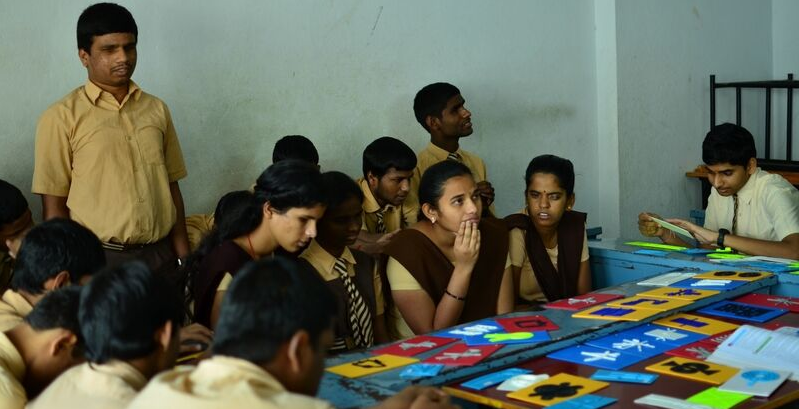The ability to innovate, create, and share has imbued this part of the technological world with a surprising and truly amazing amount of warmth as we see those who are challenged being helped in ways previously not possible. While positively transforming industry and manufacturing is one matter of importance, the ways that 3D printing is able to change lives is another altogether.
Prudhvi Reddy, a co-founder of think3D, invokes the inspiration of Helen Keller, who said, “The only thing worse than being blind is to have sight but no vision.” With that in mind, he and his team use that inspiration to remember how much more there is in the ‘big picture’ of the world aside from the daily operations of commerce and finance. They have been on a mission to give back–and it’s been successful as they contributed to a comprehensive program for the blind at the Devnar School after he and his partner, Raja Sekhar Upputuri, made a plan for what they were interested in doing. They then reached out to Dr. Saibaba Goud, a leading opthamologist and co-founder of Devnar Foundation for the Blind, which is a residential school for visually challenged children.
“We explained him about 3D printing technology and how it can be used to create 3D visual aids. He became very interested in this whole project. He assigned a faculty member as our point of contact for this project and supported us all through,” says Prudhvi.
Using 3D printed models, the think3D team made a special emphasis on creating illustrations for science all around, as that is what the blind students were having significant challenges in understanding. They 3D printed examples including a metal coil for learning in science, and even a model for demonstrating such complexities as the law of the convergence of light. They also created such models as the anatomy of the human eye, and many more.
“For normal children, we can easily explain by drawing a picture on the board. They can see and visualize it. But blind children can visualize only by touch,” said Prof. R. Parameshwaran, physics faculty at Devnar School. “We do have few visual aids in the laboratory. Those are bulky, non-portable and are prone to damage easily; moreover, creation of such visual aids is an expensive proposition. So, we are commissioning such models for very important concepts like the blood circulation system. If we can get highly portable and durable models at low cost, that will be a huge benefit for these students.”
“This is a light ray hitting the lens and reflecting back,” said one of the high school students upon receiving the light ray 3D model. “I can visualize which ray is coming from the right, which one from the left, which one is parallel and which one is perpendicular. This model helped me visualize it very well.”
The general resulting view at the school is that this is a new and permanent improvement on learning at the school.
“Initially it was a bit difficult for me to explain these blind children how the ray of light passes straight through the lens, but now with these visual aids it has become much easier,” said one teacher at Devnar.
With such success, they decided to work on reproducing images from the kids’ biology textbooks as well. While think3D, founded in 2014, is very involved in bringing the technology of 3D printing to ‘corporate honchos’ and multiple sectors, they have now certainly carved out a niche in the educational arena, and proven they have a substantial grip on what it takes to make an impact in a community like that of the visually impaired.
“3D printing is making the impossible possible, and 3D printed visual aids are a perfect example of how this technology can be deployed for the betterment of society,” says Raja Sekhar Upputuri. “This technology is still in its very early stages of evolution, and we are all excited to be part of this revolution as we continue to explore ways to deploy this technology to solve the problems.”
Have you been involved in using 3D printed models for those who are visually impaired or physically challenged otherwise? Share with us in the think3D Models for Visually Impaired forum thread over at 3DPB.com. Below is a video about the initiative, as well as photos of some of the 3D printed educational models.
3D printed model illustrating “Law of convergence of light”; Arrows demarcating the direction of light.
